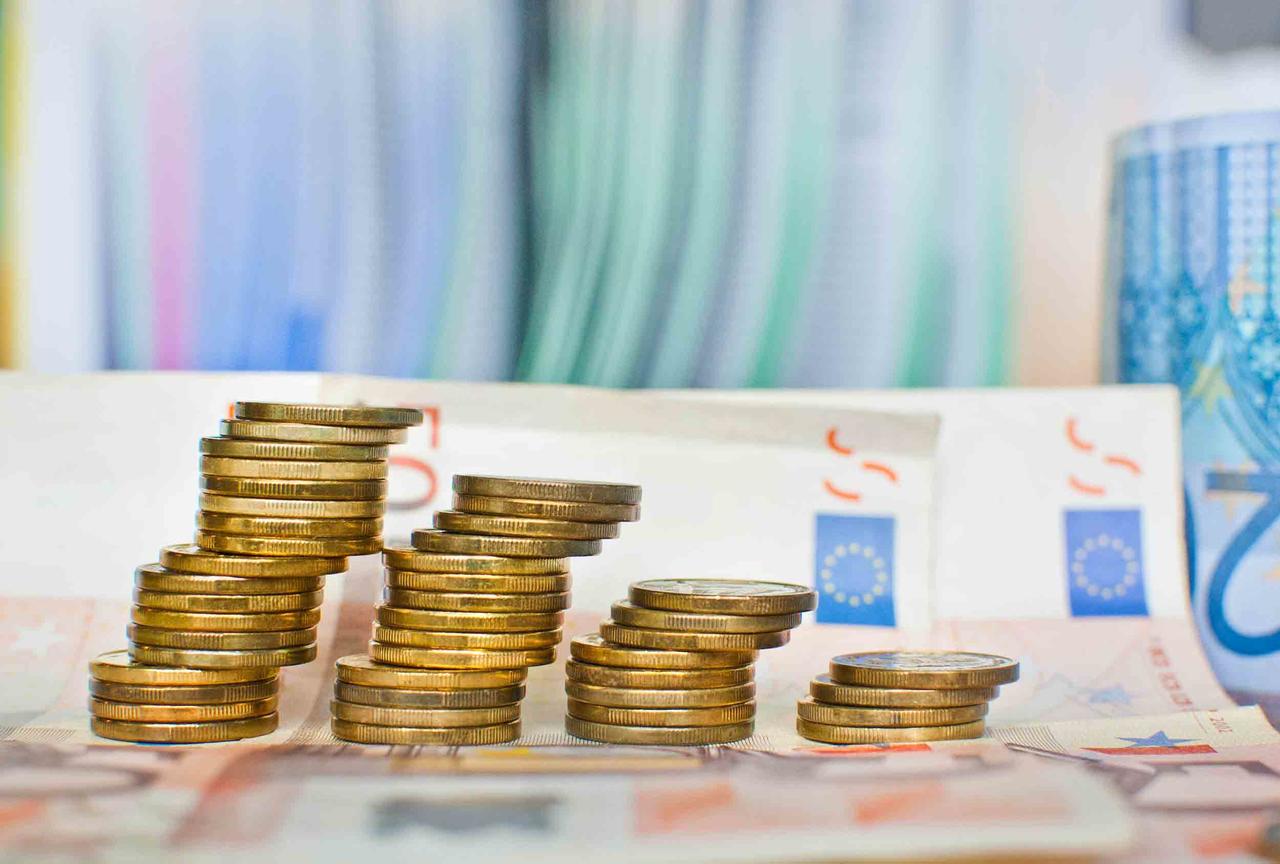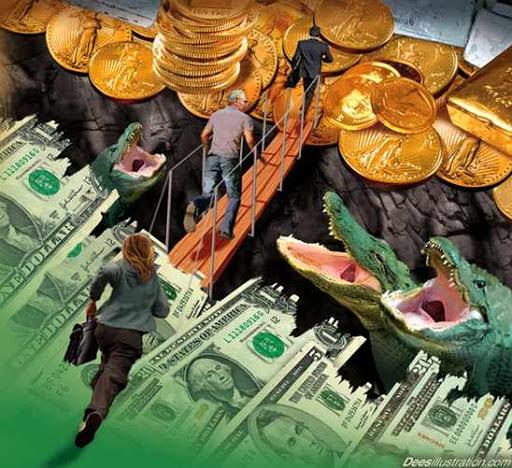Why A Bear Market Will Lead To A Dollar Collapse
by Tyler Durden
Sat, 02/29/2020 - 12:05
TwitterFacebookRedditEmailPrint
Authored by Alasdair Macleod via GoldMoney.com,
Falling equity markets this week are likely to signal the onset of a bear market, responding to a combination of the coronavirus spreading beyond China and persistent indications of a developing recession.
This has provoked a flight into US Treasuries, with the ten-year yield falling to an all-time low of 1.1141%. This will prove to be a mistake, given US price inflation which on independent estimates is running close to ten per cent, exposing US Treasuries as badly overpriced.
After this short-term response, much higher US Treasury yields are inevitable. Foreigners, who possess more dollars and dollar investments than the entire US GDP will almost certainly sell, driving bond yields up and the dollar down, leaving the Fed the only real buyer of US Treasuries.
Introduction
In my last article I pointed out that the cumulative effect of central bank intervention has led to bond prices that have come badly adrift from reality. Taking a more realistic estimate of the dollar’s purchasing power than that implied in goal-sought CPI numbers, plus an estimated amount for the time preference involved, ten-year US Treasuries should yield closer to 10% to maturity, not the 1.31% implied today. If a ten-year bond has a coupon such that it is currently priced at par, the price should halve.
Beware of the bear
It is common practice to regard portfolio investment as entirely separate from day-to-day spending. The distinction is false in the sense that financial investments only exist because the attraction of prospective returns make it worthwhile for consumers to divert some of their income from current consumption. This is important, because rising prices for financial assets requires sustained money inflows. If people on balance stop investing prices fall.
This fact undermines the assumption that in a bear market a portfolio with a valuation of a million can simply rearrange that million into different investments to preserve value. In a bear market, a significant portion of it simply disappears without any transactions taking place. Bond and stock prices fall across the board, leaving an investor wondering what to do with the balance.
Having been occasionally brutal, recent equity bear markets have been little more than indigestion in a continual inflation-fuelled bull market. The bear now due promises to be different. Hanging on in hope of better days has worked favourably for investors in the past eventually, but maybe not this time, because the scale of bond mispricing is without precedent. The Fed and other central banks believe they can handle a mild to moderate recession but have no leeway to handle anything worse. If the dynamics behind the 1929 market crash and the depression that followed are a template for today’s markets, what will evolve in the coming months will break the Fed’s control over financial markets.
In that case, fortunes will be lost. Ordinary investors who have handed investment responsibility to investment managers and financial advisors have thereby proved themselves incapable of taking an investment decision. They will lose their nest-eggs because their appointees are either perpetual bulls or simply brainless when it comes to investing. They all talk of diversifying, which means buying a synthetic index, or investing in funds that cover so many companies as to be similar. None of them have experienced a proper bear market, where nearly every bond and equity investment collapses. The Wall Street crash wiped out 89% of the value of the Dow. That should be our guidance.
Driving it will be a bear market in US Treasuries. As fleeing foreigners sell their holdings and their dollars, the single buyer of them (the Fed) will be forced to raise interest rates. But if the Fed persists in funding the government deficit at suppressed rates, foreigners will merely accelerate their liquidation of dollars and dollar-based securities. Britain faced similar conditions in the 1970s, when the UK Treasury was always behind in its funding until it was forced to jack up gilt coupons, as far as 15¼ per cent. Sterling fell from $2.62 in March 1972 when equities peaked to $1.59 in 1976, and then fell further close to parity in 1985. And that was against a dollar that was also losing purchasing power. In the 1972-75 bear market, UK equities fell by 72% measured by the FT-30 Share Index.
In an economic slump, the ability of investors to hang on to their rapidly falling investments is compromised by rising unemployment. The flows from portfolio liquidation into the underlying economy are required to maintain body and soul. Furthermore, with the dollar’s loss of purchasing power being accelerated due to selling by foreigners, domestic living costs becomes more expensive.
Stage two for the collapsing dollar
With foreigners owning a combination of cash and securities valued at about $24.8 trillion and hedge funds short of euros and yen perhaps to the equivalent of a further four or five trillion dollars equivalent, a change in financial market conditions seems almost certain to trigger an avalanche of dollar selling. US ownership of foreign securities is less that half that at $11.3 trillion (Dec 2018), with foreign currency deposits and CDs the equivalent of $618bn. While Americans are bound to liquidate some of these foreign holdings in a slump, it will not be sufficient to offset foreign selling of the dollar.
By driving the dollar down, pressure will be put on domestic prices to rise. This will make the Fed’s position of funding government debt through QE at rates linked to a suppressed Fed Funds Rate untenable. Markets will be making their own assessment, instead of the Fed’s, when it comes to securities pricing. Given there will be a growing realisation that prices will then be rising at a faster rate than the annual 10% rate currently estimated by independent analysts, government finances and their funding will demonstrably be spiralling out of control.
It will be a systemic collapse centred not on an element of the private sector as was the case with Lehman, but of the entire government apparatus. With it will be a public realisation that the full faith and credit of government is the only thing that stands between the dollar’s value of the day and its value on the morrow. Increasingly, members of the population will be likely to regard the residual values of their financial assets as a source of funding for necessities, the dollar being little more than a collapsing bridge between the two.
Those prescient enough to anticipate these events will be hedging not into US Treasuries, which in truth offer no security with government funding almost certain to spin out of control, but into gold, silver, perhaps bitcoin and related investments. They will realise it is time to give up on the Fed’s put, or any other government guarantees because they have become worthless.
- Forums
- Commodities
- GOLD
- gold
gold, page-67392
-
-
- There are more pages in this discussion • 62,590 more messages in this thread...
You’re viewing a single post only. To view the entire thread just sign in or Join Now (FREE)
Featured News
Add GOLD (COMEX) to my watchlist
The Watchlist
3DA
AMAERO INTERNATIONAL LTD
Hank Holland, Executive Chairman and CEO
Hank Holland
Executive Chairman and CEO
Previous Video
Next Video
SPONSORED BY The Market Online






